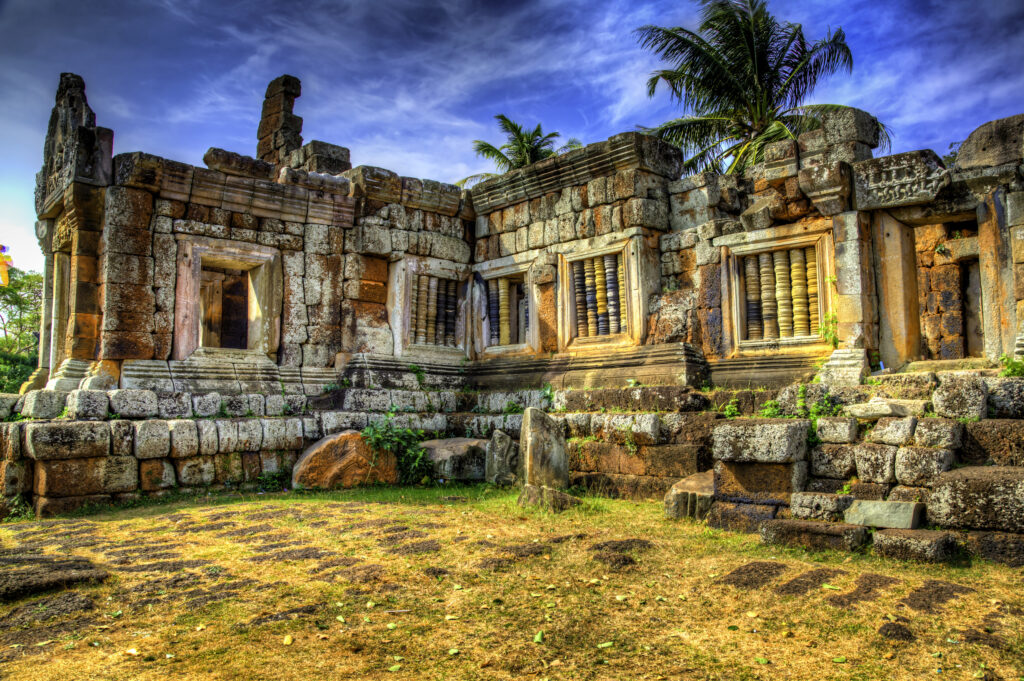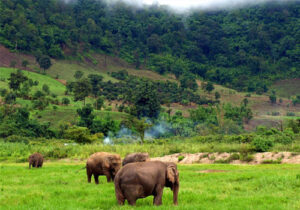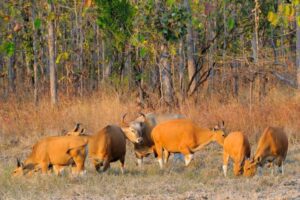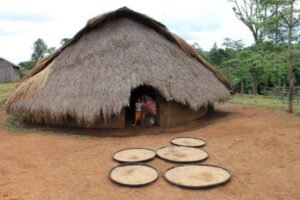
Built in the 11th century by King Suryavarman I, Phnom Chisor is dedicated to the Hindu divinities Shiva and Vishnu. Located a bit outside of Phnom Penh, the walk up the 133m high hill to reach the temple is not bad. There are a seemingly endless supply of ancient temples across Cambodia. Some people grow tired of seeing them, but I guess I have good temple endurance as I always enjoy seeing these ancient ruins – be them hidden in the depths of the jungle or perched atop a mountain.
A temple from the Angkorian era, Phnom Chisor is set upon a solitary hill in Takeo Province, offering panoramic views of the countryside. Try to get Phnom Chisor early in the morning or late in the afternoon, as it is an uncomfortable climb in the heat of the mid-day sun. Phnom Chisor lies about 65 km from Phnom Penh.
The main temple stands on the eastern side of the hilltop. Constructed of laterite and brick with carved lintels of sandstone, the complex is surrounded by the partially ruined walls of the 2.5m-wide gallery with windows.
inscriptions found here date from the 11th century, when this site was known as Suryagiri. The wooden doors to the sanctuary in the center of the complex, which open to the east, are decorated with carvings of figures standing on pigs. Inside the sanctuary are statues of Buddha.
On the plain to the east of Phnom Chisor are the sanctuaries of Sen Thmol, just below Phnom Chisor, Sen Ravang and the former sacred pond of Tonle Om. All three of these features form a straight line from Phnom Chisor in the direction of Angkor. During rituals held here 900 years ago, the king his Prahmans and his entourage would climb a monumental 412 steps to Suryagiri from this direction.
There is a spectacular view of the temple and plains from the roofless gallery opposite the wooden doors to the central shrine. Near the main temple is a wooden buddhist vihara that is used by resident monks





